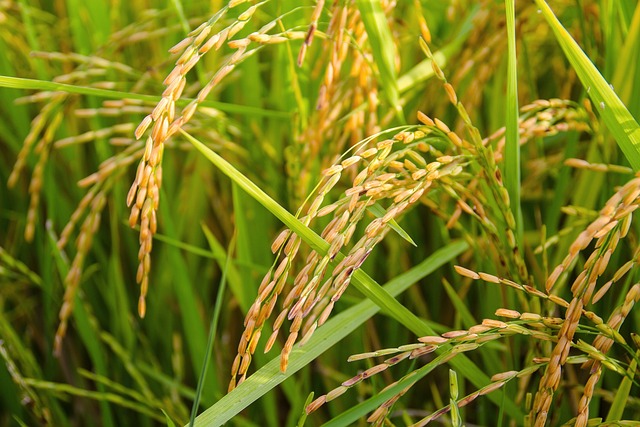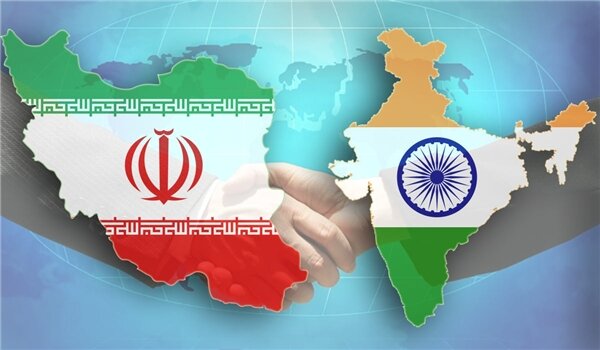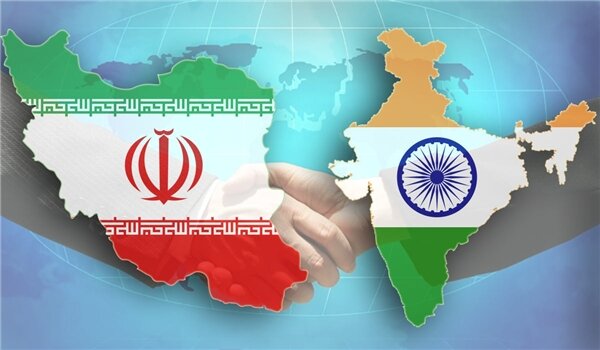Title: 8 Ways to Export Rice from India to Global Market
Hello, Every exporter! here we going to explain the top 8 ways to export Rice.
Introduction Rice is a staple food for more than half of the world’s population and plays a crucial role in global food security. As one of the most widely consumed commodities, rice also represents a significant opportunity for countries engaged in its export. However, the rice export industry faces various challenges, ranging from market competition and changing consumer preferences to logistics and quality control issues. This article explores the challenges and opportunities associated with rice exports and examines strategies to navigate the dynamic global market.
Market Competition and Price Volatility
One of the primary challenges in the rice export industry is the intense market competition among major producing and exporting countries. Countries like China, India, Thailand, and Vietnam dominate the global rice market and often engage in price wars to secure market share. This price volatility can pose challenges for exporting nations, especially smaller producers with limited resources to compete.
The opportunity lies in identifying niche markets and specialized rice varieties that can fetch higher prices. Developing organic or sustainable rice farming practices can appeal to health-conscious consumers and contribute to higher value-added exports. Diversifying rice varieties and investing in research and development can lead to the creation of unique products that cater to specific consumer demands.
Changing Consumer Preferences and Health Concerns
In recent years, consumer preferences have evolved, with a growing emphasis on health, sustainability, and quality. Many consumers are now seeking organic, gluten-free, or low-glycemic index rice options. This shift in demand presents both challenges and opportunities for rice-exporting countries.
Meeting these changing preferences requires adaptability and investment in production practices that align with consumer expectations. Countries that can offer organic or sustainably produced rice have a distinct advantage. Furthermore, developing value-added products such as rice-based snacks, ready-to-eat meals, or fortified rice can tap into the rising demand for convenience and nutrition.
Quality Control and Compliance
Maintaining consistent quality standards is crucial for successful rice exports. Poor quality or contaminated rice can lead to rejected shipments, damaging a country’s reputation and market access. Strict compliance with international food safety and quality regulations, such as those established by the Codex Alimentarius Commission, is essential.
Exporting countries must invest in quality control infrastructure, including testing laboratories and certifications. Strengthening supply chain management and implementing traceability systems can enhance transparency and ensure the integrity of exported rice. Collaboration between governments, producers, and exporters is vital to establish effective quality control mechanisms.
Infrastructure and Logistics
Efficient infrastructure and logistics are critical for the smooth flow of rice exports. Many rice-producing countries face challenges related to inadequate transportation networks, storage facilities, and port capacities. Insufficient infrastructure can result in delays, increased costs, and reduced competitiveness. Opportunities arise for countries to invest in infrastructure development projects, including road networks, cold storage facilities, and modern port facilities. Public-private partnerships can be leveraged to attract investments and enhance the efficiency of the export supply chain. Furthermore, advancements in technology, such as blockchain and IoT (Internet of Things), can improve traceability, inventory management, and supply chain transparency.
Currency Fluctuations and Trade Policies
Currency fluctuations and trade policies can significantly impact rice exports. Volatile exchange rates can influence the competitiveness of rice prices in international markets, making it challenging for exporters to predict and plan their pricing strategies effectively.
Countries can mitigate currency risks by adopting hedging strategies or entering into long-term contracts with buyers to minimize the impact of exchange rate fluctuations. Furthermore, engaging in regional or bilateral trade agreements can offer favorable market access and tariff reductions, increasing export opportunities.
Climate Change and Environmental Sustainability
Climate change poses a significant threat to rice production, impacting both quantity and quality. Erratic weather patterns, droughts, floods, and rising temperatures
have the potential to disrupt rice production and affect export capabilities. This presents a significant challenge for rice-exporting countries.
To address the challenges posed by climate change, countries need to prioritize sustainable agricultural practices. Investing in water management systems, such as efficient irrigation techniques and water harvesting methods, can mitigate the impact of water scarcity. Adoption of climate-smart farming techniques, such as precision agriculture and crop diversification, can enhance resilience and reduce vulnerability to climate-related risks.
Furthermore, promoting sustainable land management practices, such as conservation agriculture and agroforestry, can help preserve soil fertility and reduce greenhouse gas emissions. Governments and international organizations can support farmers in adopting climate-resilient practices through training programs, subsidies, and access to credit.
Market Diversification and Export Promotion
Overreliance on a limited number of export markets can leave countries vulnerable to market shocks and fluctuations in demand. Diversifying export destinations is crucial to mitigate risks and expand market opportunities for rice exporters.
Countries can explore emerging markets with growing populations and rising incomes, such as countries in Africa and the Middle East. Conducting market research and understanding the cultural and culinary preferences of target markets can enable exporters to tailor their products to specific consumer demands. Building trade relationships through trade fairs, exhibitions, and business delegations can help establish networks and access new markets.
Moreover, governments can play a vital role in export promotion by providing financial incentives, export credits, and export insurance schemes. Supporting rice exporters in branding, marketing, and product differentiation can help them gain a competitive edge in international markets.
to know news bout rice export click here.
Technological Advancements and Innovation
Technological advancements present significant opportunities for the rice export industry. Innovations in agricultural machinery, post-harvest processing, and packaging can improve efficiency, reduce losses, and enhance product quality.
Precision farming technologies, such as drones and satellite imagery, can assist farmers in optimizing input usage, monitoring crop health, and predicting yield. Mechanization of harvesting and processing operations can minimize losses and improve productivity. Additionally, investing in research and development can lead to the development of high-yielding, disease-resistant rice varieties that meet consumer preferences.
Collaboration between research institutions, private companies, and farmers can foster innovation and drive technological advancements in the rice sector. Governments can provide support through funding research initiatives, establishing technology transfer programs, and facilitating public-private partnerships.
Conclusion
The export industry faces several challenges, ranging from market competition and changing consumer preferences to infrastructure limitations and climate change. However, within these challenges lie significant opportunities for countries engaged in rice exports. By adopting strategies such as diversification, quality control, sustainability, market research, and technological innovation, rice-exporting countries can navigate the global market successfully.
It is essential for governments, farmers, exporters, and international organizations to collaborate and address these challenges collectively. Through concerted efforts, the rice export industry can thrive, contributing to food security, economic growth, and sustainable development globally. for more information visit www.dofortimpex.comhttps://dofortimpex.com/.







19 Responses
molestiae hic quia blanditiis doloremque rerum qui cupiditate sit nulla quam saepe asperiores veritatis. quos fugit fugiat quia fugiat laboriosam eveniet natus consequatur aut. eveniet et magnam voluptate ullam tempore nostrum corrupti nihil sunt itaque maiores quod eum omnis placeat debitis in excepturi. harum non laudantium error sed nesciunt iure deleniti qui numquam officiis quo assumenda et cumque aliquam magni.
startup talky I appreciate you sharing this blog post. Thanks Again. Cool.
Mygreat learning This was beautiful Admin. Thank you for your reflections.
Thank you for your sharing. I am worried that I lack creative ideas. It is your article that makes me full of hope. Thank you. But, I have a question, can you help me? https://accounts.binance.com/si-LK/register?ref=V2H9AFPY
uPVC Pipes in Iraq Elite Pipe Factory in Iraq provides a range of high-quality uPVC pipes, known for their durability, resistance to corrosion, and ease of installation. Our uPVC pipes are designed to meet rigorous quality standards, making them an excellent choice for a variety of applications. Recognized as one of the best and most reliable pipe manufacturers in Iraq, Elite Pipe Factory ensures that our uPVC pipes deliver outstanding performance and reliability. Learn more about our uPVC pipes by visiting elitepipeiraq.com.
Your point of view caught my eye and was very interesting. Thanks. I have a question for you.
Your article helped me a lot, is there any more related content? Thanks! https://www.binance.com/ar-BH/register?ref=V2H9AFPY
Thinker Pedia Great information shared.. really enjoyed reading this post thank you author for sharing this post .. appreciated
Thanks for sharing. I read many of your blog posts, cool, your blog is very good.
Muchas gracias. ?Como puedo iniciar sesion?
Your article helped me a lot, is there any more related content? Thanks!
Ezippi This was beautiful Admin. Thank you for your reflections.
I don’t think the title of your article matches the content lol. Just kidding, mainly because I had some doubts after reading the article.
Your point of view caught my eye and was very interesting. Thanks. I have a question for you.
https://youtu.be/zyebl80UwdA
Thank you for your sharing. I am worried that I lack creative ideas. It is your article that makes me full of hope. Thank you. But, I have a question, can you help me?
https://youtu.be/zyebl80UwdA
Your point of view caught my eye and was very interesting. Thanks. I have a question for you. https://accounts.binance.com/si-LK/register?ref=V2H9AFPY
Thank you for your sharing. I am worried that I lack creative ideas. It is your article that makes me full of hope. Thank you. But, I have a question, can you help me?